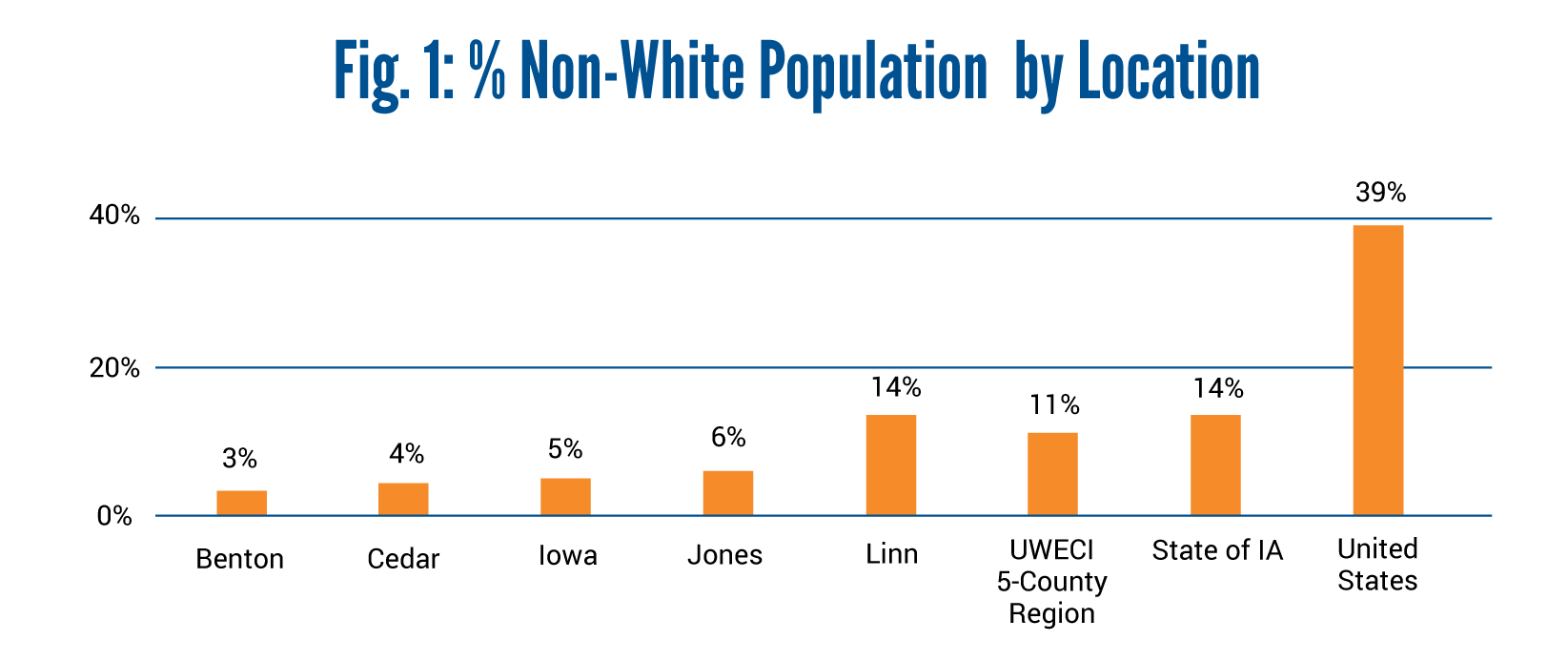Learn about disparities between groups in Eastern Iowa and how we’re working to promote equity in our communities.
United Way of East Central Iowa (UWECI) has always fought for the education, financial stability, and health for individuals throughout our five-county service area. Through advocacy, volunteer organization, and financial support, these are the pillars that UWECI strives to uphold every day. As a leader and collaborator within the community, when disaster strikes, we step up. Within the past ten months, a global pandemic has raged and the fiercest natural disaster any of us will ever experience devasted our community. The damaging impacts from these events to education, financial stability, and health continue every day. However, in the face of these emergencies, hundreds of thousands of dollars have been raised and tens of thousands of hours have been selflessly volunteered.
Unfortunately, there is another issue woven through every pillar we stand for. Without the attention it deserves as a destructive force, racism will degrade these needs among residents in the five-county region and beyond. It is certainly not a new challenge, but heightened attention was given this summer through social justice demonstrations and conversations that occurred across the country ranging from large gatherings of strangers to personal discussions with friends and family. UWECI has made commitments to promote diversity and inclusion and understands their importance. Beyond that, a Diversity, Equity, and Inclusion Committee has been created with members of UWECI leadership, staff, board, and community leaders to better understand how to adequately promote social justice along with diversity, equity, and inclusion. This will first exist through extensive internal procedural reviews and changes before external projects can be undertaken.
To be sure, a lack of diversity does not justify a lack of action. It is true that many residents in the five-county service area live within extremely homogeneous populations. Fig. 1 illustrates that 14% of Linn County’s population is non-white making it the most diverse county in the region.[1] Its population make-up is similar to the state of Iowa, overall, but much less diverse than the rest of the nation.

Disparities among different races exist in education, financial stability, and health throughout our community.
- 4% of Black Linn County residents have contracted COVID-19 (approximately 1 out of 19) compared to 3% of white residents (approximately 1 out of 33).[2]
- 75% of Black students in the UWECI five county region graduated high school after four years in 2019 compared to 92% of white students.[3]
- 42% of Black and Hispanic families in the UWECI five county region live above 250% of the federal poverty level compared to 75% of all families.[4]
These disparities exist from centuries of systematic depression of non-white individuals and communities by institutions in the private and public sectors. Bank loans to purchase houses, start businesses, or attend higher education were denied simply because of the color of applicants’ skin. Further, these kinds of tactics were made legal by federal, state, and local governments for a significant period of time. As this has occurred over generations, it has been more difficult for non-white individuals to build wealth, live healthy, and pursue education.
More discussions around diversity, equity, and inclusion will take place each Tuesday night in February with an educational series conducted by UWECI and the Cedar Rapids Civil Rights Commission. Presentations from guest speakers and community conversations will take place via Zoom. You can find information about these community conversations here.
[1] U.S. Census Bureau; American Community Survey 5-year Estimate (2018) Table DP05
[2] Linn County, Iowa Public Health, 2018 US Census ACS 5-Year Estimates table B01001, B02001, B03003, accessed 1/13/21 from https://c19-linncountygis-linncounty-gis.hub.arcgis.com/
[3] Iowa Department of Education, Bureau of Information and Analysis, Class 2019 Four Year Cohort Graduation Rates by subgroup
[4] 2018 US Census ACS 5-Year Estimates table B19131, B19101B, B19101I


